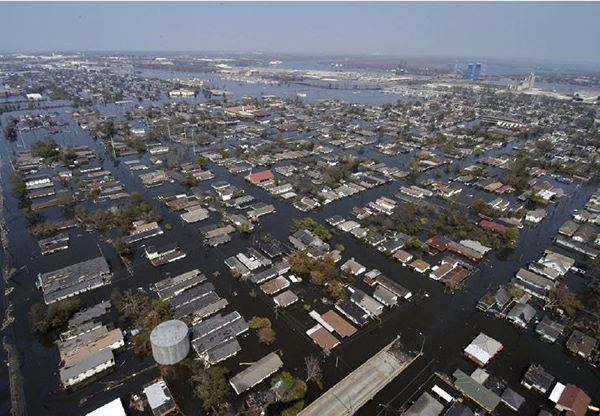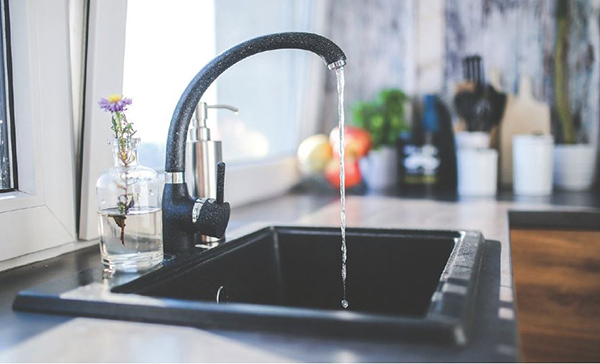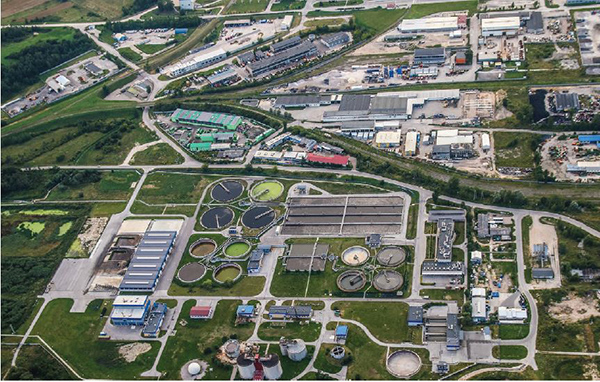Global Water Issue
“수도요금 인상 불가피하지만 실질적 적용 어려워
합리적·탄력적인 요금 현실화 방안 모색해야”
미 환경보호청·미 수도협회·세계경제포럼, 풀 코스트 요금책정 지지
(Full-cost)
수도 유틸리티, 인프라 운영·유지·보수 위해 수도요금 인상 필요
요금 인상 시 저소득 가구의 수도 서비스 이용 보장할 수 있어야
‘코로나19’가 수도사업 자금 조달에 미치는 영향
Can’t Pay, Won’t Pay : COVID-19’s Implications For Water Utility Funding
재정 적자에 시달려온 상하수도 사업은 ‘코로나19’ 확산으로 수익마저 점점 줄고 있다. 수도사업은 ‘코로나19’ 여파에 따른 재정난에 어떻게 적응해 살아남을 것이며 나아가 어떻게 번성할 수 있을까. 미국은 수도요금 현실화라는 큰 도전과제에 직면해 있다. 수도사업은 고객에게 안전하고 신뢰할 수 있는 상하수도 서비스를 지속적으로 제공할 수 있도록 더 많은 자금을 확보해야 한다. 그러나 대부분의 고객은 수도요금 인상을 꺼리고 지불할 여력조차 없는 고객들도 있다. 이 때문에 요금을 책정하는 수도사업자들도 요금 인상을 주저한다. 이러한 상황에서 ‘코로나19’가 터졌다. 지난 9월 15일자 『Water Innovations』 9월호에 실린 ‘Can’t Pay, Won’t Pay : COVID-19’s Implications For Water Utility Funding’ 기사에 이러한 내용이 소개됐다. 그 내용을 번역했다.
요금 인상에 대한 찬성 의견
The Case For A Rate Rise
가정 및 산업 고객에게 처리된 물을 공급하는 수도사업은 자산 집약적인 산업이다. 이러한 자산 중 대부분은 작동 수명이 다했거나 초과한 것들이지만, 자금 조달이 충분치 않아 교체되지 못하고 있다. 교체 비용을 충당하려면 수도요금 인상이 불가피하기 때문이다. 수도 시스템에 대한 연방정부 자금도 1997년 최고치를 갱신한 후 실질적으로 77% 감소했다. 미국의 글로벌 물기업 블랙앤비치(Black & Veatch)가 실시한 ‘2020년 전략방향 : 워터 리포트(2020 Strategic Directions : Water Report)’ 설문조사에 참여한 상하수도 및 빗물 전문가의 약 80%가 노후화된 인프라를 가장 큰 문제로 꼽았다.
지난 2018년 유타주립대학교 연구진이 미국과 캐나다의 수도시설 200여 개소를 조사한 결과, 약 16%가 유효수명을 넘어선 것으로 나타났다. 불과 6년 전만 해도 유효수명을 넘은 시설은 8%에 불과했다. 관 노후화로 인한 수도관 파열도 6년 새 27% 증가했다. 미국수도협회(AWWA)와 미국토목학회(ASCE) 추정에 따르면 수도관 파손은 연간 24만여 건에 달한다.
누수는 수도요금을 직·간접적으로 증가시킨다. 누수 지점을 파악하고 수리공사를 하는 데 많은 비용이 소요되기 때문이다. 또 누수로 유실된 물을 대체하기 위해 처리된 물의 양이 증가하고, 이에 따라 처리비용도 증가한다. 누수는 또한 수압 약화를 초래해 에너지 비용을 증가시킨다. 펌핑 시스템이 필요 수준의 수압을 유지하기 위해 더 많은 전력을 소비하기 때문이다.
결과적으로, 노후화된 인프라는 자산 교체뿐만 아니라 더 많은 운영 및 유지보수 비용을 발생시킨다. 극한 기후 상황이 빈번해짐에 따라 수도사업은 자산의 회복탄력성(resilience) 향상 비용 또는 서비스 실패 위험 증가 등에 직면하게 된다. 게다가 끊임없이 증가하는 고객 수요를 만족시키기 위해 자산 기반 확장 비용도 마련해야 한다. 이러한 비용은 모두 요금 인상에 대한 압박에 반영된다.
Treating water and delivering it to domestic and industrial customers is asset intensive. Many of these assets are reaching, or have passed, the end of their operating life. They have not been replaced because rate increases have historically, and remain, insufficient to fund the capital investment necessary; and federal funding for water systems has fallen by 77 percent in real terms since its peak in 1977. Nearly 80 percent of the water, wastewater, and stormwater professionals who took part in Black & Veatch’s 2020 Strategic Directions : Water Report survey cited aging infrastructure as their most challenging issue.
Utah State University researchers who examined some 200 water utilities in the U.S. and Canada in 2018 found 16 percent of mains were beyond their useful lives. Six years earlier, only 8 percent of mains had reached their end-of-life. The growing up of mains resulted in a 27 percent increase in ruptures during the six years between the two studies. The American Water Works Association(AWWA) and the American Society of Civil Engineers(ASCE) estimate 240,000 main breaks occur annually.
Leakage increases utilities expenditures directly and indirectly. Leaks are costly to locate and repair. Treatment costs rise as the volume of water processed is increased to replace the water lost through leaks. Leakage can also lead to pressure loss - which means pumping systems must consume more power, thus increasing energy bills - to maintain the required level of pressure.
In consequence, aging infrastructure burdens utilities not just with the replacing assets, but also with higher operating and maintenance costs. As extreme weather revents grow in frequency, utilities also face the cost of enhancing assets resilience or an increased risk of service failures. In addition, they must meet the cost of expanding the asset base to meet the ever-increasing customer demand. All of these costs are reflected in the pressure to raise rates.
요금 인상에 대한 반대 의견
The Case Against A Rate Rise
미국 환경보호청(EPA)에 따르면 미국 내 일반 가정의 가계 소득 대비 상하수도 요금은 다른 선진국에 비해 낮은 편이다. EPA는 이것이 물이란 언제든 쉽게 이용할 수 있고 수도 서비스를 제공하는 것이 일반적으로 저렴하다는 인식 때문이라고 말한다. 무엇을 위해 요금을 지불하는지 완전히 이해하지 못하고 있기 때문에 수도 서비스를 제공하고 유지하는 데 드는 총 비용에 상응하는 요금을 지불하기 꺼리는 것이다.
블랙앤비치의 ‘2020년 전략방향 : 워터 리포트’설문조사에서 응답자의 3분의 1은 “깨끗한 상하수도 및 빗물 서비스를 제공하는 데 필요한 것을 고객들이 이해하지 못할 것”이라고 답했다. 또한 응답자 5분의 1은 “고객들이 실제 자신이 받는 수도 서비스에 대한 기본적인 지식이 없다”고 응답했다.
또 다른 중요 요인은 인프라 개선에 필요한 자금은 선거 주기의 프리즘(prism)을 통해 요금 인상을 결정할 수 있는 시의회, 이사회 또는 기타 시민 감시자의 영향을 받을 수 있다는 점이다. 요금을 낮추려는 정치적 욕구로 물은 비용에 대한 불만이 잠재적으로 중요한 영향을 미치는 유틸리티가 되었다. 낮은 비용을 유지하는 것이 정치인의 당선가능성에 어느 정도 도움이 될 수 있겠지만 여기에는 경제적인 문제도 있다. 저소득 가구가 수도 서비스를 이용할 수 있도록 보장할 필요가 있다.
Comparatively, Americans do not pay high water bills. As a percentage of household income, U.S. households pay less for water and wastewater than other developed countries, according to the U.S. EPA. There is, the EPA has observed, a perception that water is readily available and provision of water services is generally inexpensive. So, contributing to an unwillingness to have rates that approach the true cost of providing and maintaining water services is the sense that customers do not understand fully what they are paying for.
This is borne out by Black & Veatch’s 2020 Strategic Directions : Water Report, with one-third of respondents saying their customers probably do not understand whit it takes to supply them with clean, potable water, as well as wastewater and stormwater services. Also, one in five respondents felt that their customers do not have the baseline knowledge about the service they receive.
Another significant factor is that funding necessary for infrastructure upgrades may be influenced by city councils, boards, or other civic overseers who may decide rate increases through the prism of election cycles. The political desire to keep bills down makes water about the only commodity for which complaining about the cost may potentially have a significant impact. Although keeping rates low may well be, in part, about electability, there is also the issue of affordability. There remains a need to ensure low-income households have access to water services.

가디언 미디어 그룹(Guardian Media Group)의 미국 12개 도시 분석 결과 ‘2010∼2018년 상하수도 합산 요금’은 평균 80% 올랐으며, 일부 도시 거주자의 5분의 2 이상이 요금을 감당하기 어려운 처지인 것으로 나타났다. 미국 소비자단체인 푸드 앤 워터 워치(Food & Water Watch)의 2018년 보고서에 따르면, 매년 20가구 중 1가구가 요금 미납으로 단수를 겪는다.
또한, 적절한 수도요금을 책정하는 것에 관한 유틸리티의 태도는 다양하다. 블랙앤비치(Black & Veatch)의 ‘2020년 전략방향 : 워터 리포트’ 설문조사 결과, 응답자의 67.4%가 ‘가격적정성이란 고객에게 서비스를 제공하고 개선을 이룰 수 있을 만큼 충분한 요금을 부과하는 것이라고 생각한다’고 답했고, 23.9%는 ‘모든 고객에게 기본적인 수준의 물을 합리적인 가격으로 제공하는 것’, 4.3%는 ‘가능한 한 낮은 요금을 유지하는 것’이라고 인식했다. 미국 환경보호청(EPA)은 수도 서비스 요금에 인프라를 유지하고 향후 보수, 재건 및 교체 등을 계획하고 소비자에게 고품질의 상하수도 서비스를 제공하는 실제 비용을 정확히 반영해야 한다고 제안했다. 미국 수도협회(AWWA)와 세계경제포럼(WEF)도 상하수도 요금의 풀 코스트(full-cost) 책정을 지지한다.
Analysis of 12 U.S. cities undertaken by Guardian Media Group found that the combined price of water and sewage services increased by an average of 80 percent between 2010 and 2018, with more than two-fifths of residents in some cities living in neighborhoods with unaffordable bills. As many as one in 20 homes are disconnected for unpaid bills annually, according to a 2018 report by Food & Water Watch.
In addition, utilities attitudes to what constitutes affordability vary. The 2020 Strategic Directions : Water Report found 67.4 percent of respondents felt affordability meant charging enough to serve customers and make improvement; 23.9 percent said affordability was providing a basic level of water at an affordable price to all customers; while 4.3 percent felt affordability meant keeping rates as low as possible. The EPA has proposed that the pricing of water services should accurately reflect the true costs of providing high-quality water and wastewater services to consumers to maintain infrastructure and plan for upcoming repairs, rehabilitation, and replacement of that infrastructure. AWWA and the World Economic Forum also support the full-cost pricing of water and wastewater services.

그리고 ‘코로나19’가 터졌다
And Then Came ‘COVID-19’
코로나19로 인한 피해는 유틸리티(수도사업)와 고객 모두에게 찾아왔다. 이미 자본투자 자금 조달에 어려움을 겪고 있는 수도사업은 최대 규모의 소비자인 상용기업과 산업기업들이 영업을 중단함에 따라 수익이 감소하고 있다. 게다가 코로나19로 실업자가 증가하면서 수도요금을 납부할 수 없게 되는 사람도 늘었다. 그러나 수도공급자는 요금 미납자에게 상하수도 단수 조치를 유예하고, 기존 요금미납으로 단수 처리 된 고객에게도 다시 수도서비스를 제공하고 있다. 이러한 단수조치 유예는 인도적 차원에서 시행하는 것이기도 하지만 바이러스를 억제하는 데 물과 위생이 중요하다는 것을 보여주는 것이기도 하다.
2020년 4월 AWWA와 도시물관리기관협회(Association of Metropolitan Water Agency)가 실시한 평가를 보면, 코로나19가 상수도사업에 미친 재정적인 영향은 약 139억 달러로, 전체 재정 피해의 16.9%에 해당한다. 하·폐수사업은 하수도 접근 유지비용과 함께 약 168억 달러의 수익 손실이 예상된다. 미국 국립청정수자원기관협회(NACWA)는 ‘코로나19’ 팬데믹(pandemic) 기간에 고객들의 연체요금을 탕감하고 서비스를 무상 제공하는 등 지원으로 발생하는 재정 적자는 궁극적으로 고객에게 전가되어 향후 요금 인상으로 이어질 것이라고 경고했다. 반면 많은 사람들은 경제가 회복되고 수백만 일자리가 회복될 때까지 요금 인상을 더 연기해야 한다고 요구했다.
The harm being wrought by COVID-19 does not discriminate between utility and customer. Utilities already struggling to fund much-needed capital investments are losing revenue as commercial and industrial enterprises - water utilities biggest volume consumers - suspend operations. In addition, tens of millions of U.S. workers are being laid off during the outbreak, rendering many unable to pay their water bills Around the country, however, water providers have not only suspended water and wastewater shutoffs to delinquent accounts but also reconnected those previously shut off. The shutoff moratorium is both in the interest of humanity and an affirmation of the importance of water and sanitation in trying to contain the virus.
An assessment commissioned by AWWA and the Association of Metropolitan Water Agencies, in April 2020, indicated an aggregate financial impact of COVID-19 on drinking water utilities of approximately $ 13.9 billion, representing an overall 16.9 percent financial toll. Wastewater utilities were expected to lose an estimated $ 16.8 billion in revenues, along with the costs of maintaining sewer access. The National Association of Clean Water Agencies(NACWA) warned that without taxpayer help to the industry the revenue loss from forgiving customer debts and providing services without payment during the pandemic ultimately would be passed on to water customers in subsequent years and lead to future rate increases. In contrast, many expect significant pressures to further defer rate increases until the economy recovers and the millions of jobs are returned.

자금 격차 해소
Bridging The Funding Gap
유틸리티 기업은 자금 격차를 해소할 수 있는 여러 옵션을 갖고 있다. 돈이 없는 것보다 낫다는 관점으로 볼 때, 일부 대형 유틸리티 기업은 지불 계획 기간을 연장하기도 한다. 이용 가능한 다른 표준 금융 상품으로는 준비금 인출, 단기 신용 대출(short-term credit), 기존 부채 리파이낸싱(refinancing) 등이 있다.
규제 측면에서는 ‘코로나19’ 관련 비용 회수를 위한 일몰 조항(sunset clause)과 할증료 등이 있다. 연방정부로부터 지원을 받을 수 있지만 그렇다고 해서 당장 수입이 생기지는 않을 것이다. 1970년대 연방정부가 물 인프라에 막대한 투자를 했던 것처럼 유사한 일이 다시 일어날 수도 있다는 믿음으로 이어질 수 있다. 그러나 가능성은 희박하다. 유틸리티 기업 자금의 약 3분의 1을 차지하는 현재, 지원 기능을 확대하는 것조차 업계에서 기대되는 사항이 아니다.
고객의 납부 능력은 저소득 가구 에너지 지원 프로그램(Low-Income Home Energy Assistance Program)과 유사한 것을 제공함으로써 지원할 수 있다. 물이 아닌 기타 생활 영역에 보조금이나 자금 지원을 늘리는 것도 가구의 전반적인 부담을 덜어주면서 연체된 수도요금을 납부하도록 하는 데 도움이 될 수 있다. 또 저렴한 물값을 해결하는 것은 정치단체들이 취약계층에 서비스를 제공하는 데 더 큰 이점이 있음을 인식하는 일이므로, 수도 서비스 비용은 고객층에서 부담할 수 있게 된다.
Utilities have a number of options to bridge the funding gap. Taking the view that some money is better than none, some larger utilities may extend payment plan terms. Other standard financial instruments available include drawing upon reserves, seekiing short-term credit, and refinancing existing debt.
On the regulatory side, we may see surcharges, with a sunset clause, for the recovery of COVID-19-related cost. There is the potential to seek federal government support, but that will not generate immediate income. Significant federal investment in water infrastructure during the 1970s may lead to the belief that something similar may, or should, happen again. But this seems unlikely. Even extending current support, which accounts for about one-third of utilities’ funding, is not anticipated widely within the industry.
Customers’ ability to pay could be supported by the provision of something akin to the energy sector’s Low-Income Home Energy Assistance Program to water. Increased grants and funding in other areas of a customer’s life may help ease the overall burden on the household and thus help with delinquent water payments. Besides, addressing affordable water may mean that political bodies need to recognize there is a greater good in serving struggling customers, and therefore the costs of water services could be shared across the customer base.
이로 인해 무슨 이점이 생길까?
What Good Will Come of This?
수도 유틸리티 기업은 ‘코로나19’ 대유행이라는 위기 속에서 고객에게 지속적으로 서비스를 제공한다는 것에 자부심을 가져야 한다. 어려운 상황에서도 수도가 계속 작동하도록 유지함으로써 유틸리티는 서비스를 유지하는 데 중요한 활동이 무엇인지를 보다 명확히 알 수 있다. 이러한 통찰력은 최대의 이익을 얻을 수 있는 일에 제한된 자본 예산을 효율적으로 사용하는 데 도움이 될 것이다. 핵심 활동에 중점을 두어 경험은 효율성을 개선하는 최선의 방법과 더 잘해야 할 사항에 대한 이해를 촉진해야 한다.
코로나19 대응 노력을 통해 유틸리티 기업은 일부 기본적인 인식을 돌아볼 수 있었다. 예를 들어 콜센터 없이도 고객 서비스와 같은 기능을 원격으로 성공적으로 전달할 수 있었다. 또 비록 쉽지는 않았지만 엔지니어링 기능 및 공장 교대를 원격으로 관리하고 전달할 수 있다는 것을 경험했다. 이전에는 그다지 관심을 끌지 못했던 아이디어들이다.
기술 부족과 인력의 고령화 상황에서 더 유연한 방식으로 근무하는 모습을 보임으로써 유틸리티 기업은 분산된 조직에서 일하는 데 익숙한 젊은 세대 근로자들에게 더 매력적으로 보일 수 있다. 따라서 자금 조달 및 경제성 문제가 당분간 계속될 것 같지만, 코로나19 이후(포스트 코로나) 시대의 유틸리티 기업은 아마도 이전보다 더 탄력적이고 적응력 좋은 조직이 될 것이며, 결과적으로는 강해질 것이다.
Without dismissing the extreme pressures water utilities have coped with during the pandemic, the fact that they have continued to serve their customers should be a cause of some pride. Keeping the faucets running under such duress has enabled utilities to see with greater clarity which activities are crucial to maintaining services. These insights should help enhance the targeting of limited capital budgets on the thing that will reap the greatest benefits. By soliciting a focus on core activities, the experience should also foster an understanding of the best ways in which to improve effectiveness, and what needs to be done better.
Rising to the COVID-19 challenge enabled utilities to reassess some of their basic perceptions. For instance, it has been possible to successfully deliver functions such as customer services remotely, without the need for a call center. Similarly, although it has been far from easy, utilities have shown that it is possible to manage and deliver engineering functions and plant shifts remotely - not an idea that gained much traction previously.
Against a backdrop of a skills shortage and aging workforce, by proving their ability to work in more flexible ways, utilities will potentially be more appealing to younger generations of workers more accustomed to working in a more diffuse organization. So, while funding and affordability challenges are likely to continue, the post-COVID-19 utilities that will have to deal with them are probably more resilient and adaptable organizations than previously, and stronger as a result.
극한 기후 상황이 빈번해짐에 따라 수도사업은 자산의 회복탄력성(resilience) 향상 비용 또는 서비스 실패 위험 증가 등 문제에 직면했다. 게다가 끊임없이 증가하는 고객 수요를 만족시키기 위해 자산 기반 확장 비용을 마련해야 한다. 이러한 비용은 모두 요금 인상에 대한 압박에 반영된다.
미국 소비자단체인 푸드 앤 워터 워치(Food & Water Watch)의 2018년 보고서에 따르면 매년 20가구 중 1가구가 요금 미납으로 단수를 겪는다.
수도공급자들은 요금 미납자에게 상하수도 단수 조치를 유예하고, 기존 요금미납으로 단수 처리 된 고객에게도 다시 수도서비스를 제공하고 있다. 이러한 단수조치 유예는 인도적 차원에서 시행하는 것이기도 하지만 바이러스를 억제하는 데 있어 물과 위생이 중요하다는 것을 보여주는 것이기도 하다.
필자소개
안 부이(Ann T. Bui) 박사는 블랙앤비치 매니지먼트 컨설팅(Black & Veatch Management Consulting) 전무이사로 회사의 물시장 사업을 이끌고 있다. 안 부이 박사는 고객에게 전략적 재무관리 전략을 제공함과 더불어, 재무 및 자문 계획, 지능형 검침, 고객 경험, 자산 무결성 및 기업 위험 관리 서비스 등 분야에서 물 유틸리티의 성장과 혁신을 주도하고 있다. 그는 지금까지 30년 이상 유틸리티와 함께 일해오며 400건이 넘는 계약을 성사시켰다. 또한 서비스 인구가 5천 명 미만인 유틸리티부터 300만 명 이상인 유틸리티까지 다양한 규모의 공공 및 투자자 소유 유틸리티에 재무 및 비즈니스 계획 서비스를 제공해오고 있다.
[출처 = Water Online(https://www.wateronline.com/doc/can-t-pay-won-t-pay-covid-s-implications-for-water-utility-funding-0001) / 2020년 9월 16일자]
[『워터저널』 2020년 10월호에 게재]

